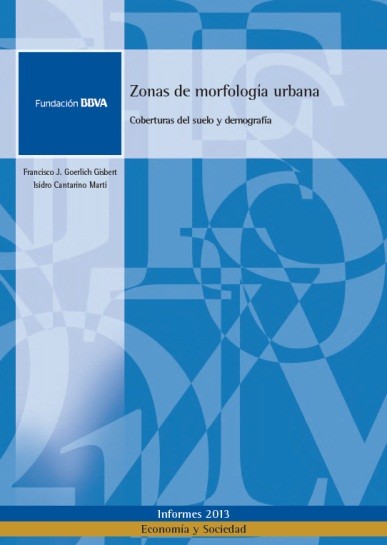
PublicationReports
Zonas de morfología urbana
Coberturas del suelo y demografía
Research works on urban areas usually face the problem of delimiting the scope of these areas with a fair degree of accuracy. There is no consensus among scholars on how to define urbanization processes and consequently several alternatives have been tried. Most procedures use demographic principles, either absolute or relative. This report addresses the problem of delimiting urban areas from a completely different approach: using the newly released land cover databases.
The report defines urban morphological zones (UMZ) using this information. We establish as urban areas mainly those artificial areas which shape the complex pattern of densely populated areas, i.e. incorporating not only built-up residential areas, but also areas for administrative, commercial, health and transportation services, artificial parks and gardens, etc.
To this end, we use the model developed by the Spanish National Geographical Institute, the new Land Cover and Use Information System of Spain (SIOSE), which allows a high degree of detail thanks to its high resolution, and thus discard other models generally used in Europe like the CORINE Land Cover classification. However, the complexity of the original SIOSE data model has forced us to develop a hierarchical model of simple cover allocation, which is the first interesting contribution of this project.
Once the UMZ are defined, and using the one square kilometer population grid for Spain developed by the authors in a previous report, we assign the population to each urban area. Next, we select the most populated UMZ and for these zones we produce a set of urban indicators, such as the surface of green areas or sports facilities per inhabitant.
